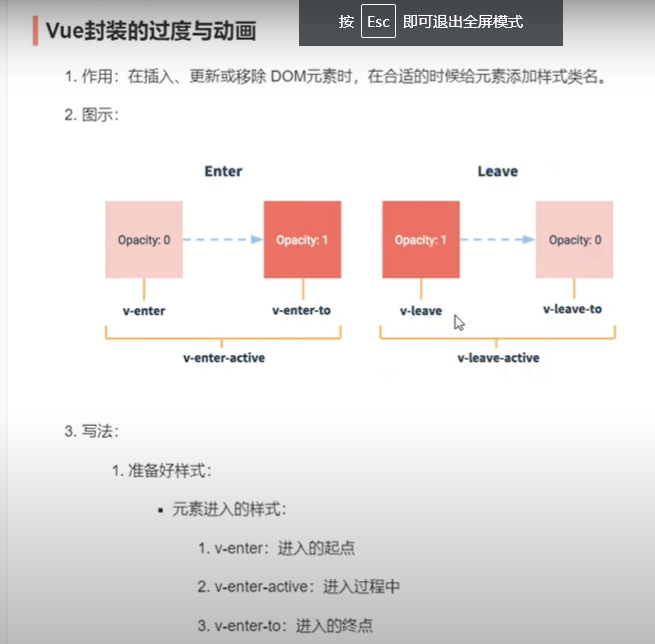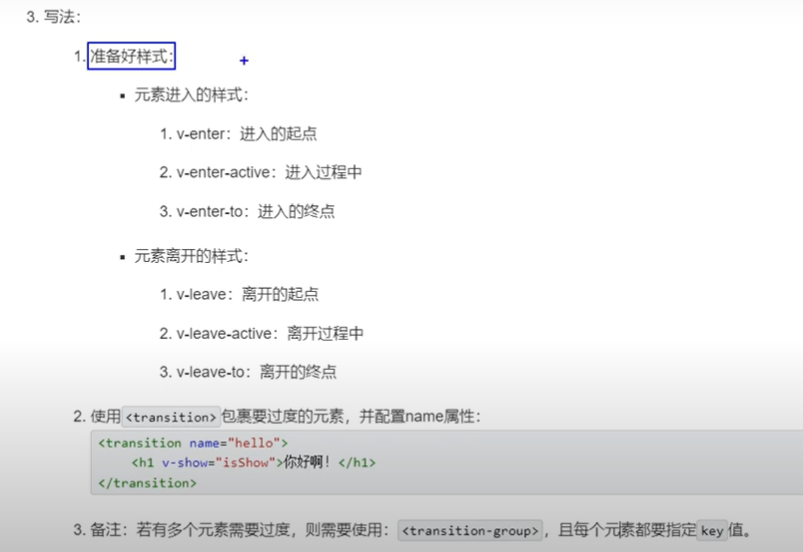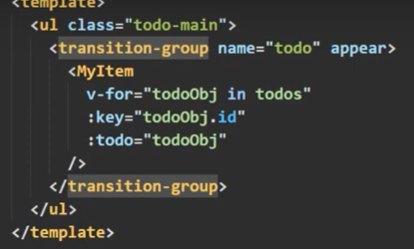Vue 尚硅谷 Vue 、 VueComponet、脚手架、 npm view webpack versions查看版本、$childrens、 $slots
https://developer.mozilla.org/zh-CN/ MDN查询用法
console.dir(Vue) //查看Vue对象属性
Vue.config/Vue.data/Vue.component/Vue.directive/
//定义组件 const school = Vue.extend({ template: ` <h2>{{message}}</h2> `, data(){ message: 'nihao, hello' } }) //局部注册组件 new Vue({ el: '#root', components: { school } }) //全局注册 Vue.component('school', school) 使用方法: <div id="root"> <school></school> <school></school> </div> Vue中使用组件的三大步骤: 一、定义组件(创建组件) 二、注册组件 三、使用组(写组件标签) 一、如何定义一个组件? 使用Vue.extend(options)创建。其中options和new Vue(options)时传入的那个options几乎一样。但也有点区别 区别如下: 1.el不要写,为什么? - 最终所有的组件都要经过一个vm的管理,由vm中的el决定服务哪个容器。 2.data必须写成函数。为什么? - 避免组件被复用时,数据存在引用关系。备注:使用template可以配置组件结构。 二、如何注册组件? 1.局部注册:靠new Vue的时候传入components选项 2.全局注册:靠Vue.component('组件名',组件) 三、编写组件标签: <school></school>
几个注意点: 1.关于组件名: 一个单词组成: 第一种写法(首字母小写):school 第二种写法(首字母大写):School 多个单词组成: 第一种写法(kebab-case命名):my-school 第二种写法(CamelCase命名):MySchool(需要Vue脚手架支持) 备注: (1)组件名尽可能回避HTML中已有的元素名称,例如:h2、H2不行。 (2).可以使用name配置项指定组件在开发者工具中呈现的名字。 2.关于组件标签: 第一种写法:<school></school> 第二种写法:<school/> 备注:不用使用脚手架时,<school/>会导致后续组件不能渲染。 3.一个简写方式: const school =Vue.extend(options)可简写为:const school=options对象形式
关于VueComponent: 1.school组件本质是一个名为VueComponent的构造函数,且不是程序员定义的,是Vue.extend生成的。 2.我们只需要写<school/>或<school></school>,Vue解析时会带我们创建school组件的实例对象,即Vue帮我们执行的:new VueComponent(options)。 3.特别注意:每次调用Vue.extend,返回的都是一个全新的VueComponent!!!! 4.关于this指向: (1)组件配置中: data函数、methods中的函数、watch中的函数、computed中的函数 它们的this均是【VueComponent实例对象】 (2).new Vue(options)配置中: data函数、methods中的函数、watch中的函数、computed中的函数 它们的this均是【Vue实例对象】。 5.VueComponent的实例对象,以后简称vc(也可称之为:组件实例对象)。 Vue的实例对象,以后简称vm。
1.一个重要的内置关系:VueComponent.prototype. __proto__ === Vue.prototype
2.为什么要有这个关系:让组件实例对象(vc)可以访问到 Vue原型上的属性、方法。
重点理解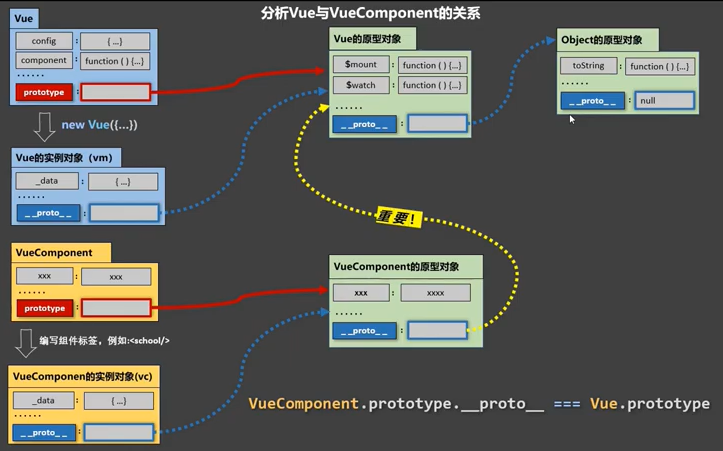

脚手架:
https://cli.vuejs.org/zh/
3.1.2 具体步骤 第一步(仅第一次执行):全局安装@vue/cli。 npm install-g @vue/cli 第二步:切换到你要创建项目的目录,然后使用命令创建项目 vue create xxxx、vue init webpack xxxx 第三步:启动项目← npm run serve 备注:" 1.如出现下载缓慢请配置npm淘宝镜像:npm config set registry https://registry.npm.taobao.org
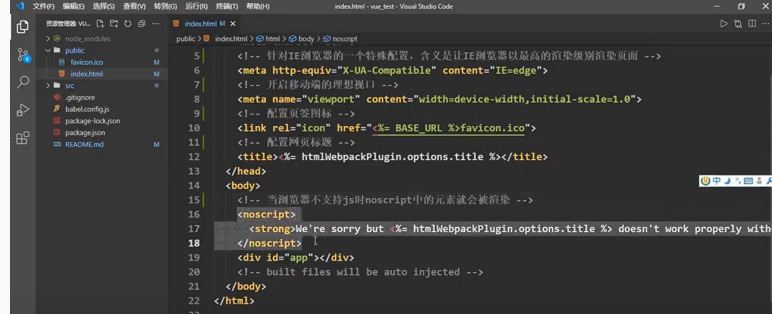
关于不同版本的Vue:
1.vue.js与vue.runtime.xxx.js的区别:
(1).vue.js是完整版的Vue,包含:核心功能+模板解析器。
(2).vue.runtime.xxx.js是运行版的Vue,只包含:核心功能:没有模板解析器。
2.因为vue.runtime.xxx.js没有模板解析器,所以不能使用template配置项,需要使用 render数接收到的createElement数去指定具体内容。
脚手架的配置生成出来,便以查看:
vue inspect > output.js
组件传递数据 <Student name="" :age="18"/> //如果props接收的数据要修改,请绑定到data变量myAge data() { return { myAge: this.age } } 写法一: props: ['name', 'age'] 写法二: props: { name: String, age: Number } 写法三: props: { name: { type: String, required: true }, age: { type: Number, default: 99//默认值 ,和required不同时使用,没有意义 } } 用法: <div>姓名:{{name}},年龄: {{age}}</div>
混合:
//也可以全局混合:main.js中引入 import {hunhe, hunhe2} from '../mixin' Vue.config.productionTip = false Vue.mixin(hunhe) Vue.mixin(hunhe2) 多个组件共用的配置提取成一个混入对象 mixin混入 //混合用法: //data和methods冲突时,以原先为主,而不会替换。mounted钩子冲突时,同时执行,先执行混合,再执行原先的。 import {hunhe, hunhe2} from '../mixin' mixins: [hunhe, hunhe2] ---mixin--- export const hunhe = { methods: { showName() { alert(this.name) } }, mounted() { console.log('你好啊!') } } export const hunhe2 = { data() { return { x: 100, y: 200 } } }
插件plugins
定义全局插件 -----plugins.js----- export default { install(Vue, x, y, z) { //过滤器 Vue.filter('', function(value){}); //指令 Vue.directive('fbind', {}) //定义混入 Vue.mixin({}); //给Vue添加原型方法 Vue.prototype.hello = () => {alert('你好啊!')} } } main.js引入 import plugins from './plugins' Vue.use(plugins, x, y, z)//这样,所有页面都能用,允许传参数
解决class样式冲突
<style scoped>这样定义局部样式,scoped不适合App.vue(App.vue可以定义全局的样式)。
<style lang="css">默认或<style lang="less">
npm view webpack versions、npm view less-loader versions查看版本
npm i less-loader@7 这样默认安装7版本里面最新版
npm i nanoid 一个简易的uuid生成器
import {nanoid} from 'nanoid'
const obj = {id: nanoid(), title: e.target.value, done: false}
总结TodoList案例 1.组件化编码流程: (1)拆分静态组件:组件要按照功能点拆分,命名不要与html元素冲突 (2).实现动态组件:考虑好数据的存放位置,数据是一个组件在用,还是一些组件在用: 1).一个组件在用:放在组件自身即可。 2).一些组件在用:放在他们共同的父组件上(状态提升)。 (3).实现交互:从绑定事件开始。 2.props适用于: (1).父组件=>子组件 通信 (2).子组件=>父组件 通信(要求父先给子一个函数) 3.使用v-model时要切记:v-model绑定的值不能是props传过来的值,因为props是不可以修改的! 4.props传过来的若是对象类型的值,修改对象中的属性时Vue不会报错,但不推荐这样做。
浏览器本地存储: localStorage 清除cookie缓存自动删除 /sessionStorage 浏览器关闭自动删除
ref组件vc间通信(vc)
##ref属性 1.被用来给元素或子组件注册引用信息(id的替代者) 2.应用在html标签上获取的是真实DOM元素,应用在组件标签上是组件实例对象(vc) 3.使用方式: 打标识:<h1 ref="xxx">.....</h1> 或 <School ref="xxx"></School>获取:this.$refs.xxx
组件间通讯 方法一:props App.vue <School :getSchoolName="getSchoolName"/> methods: { getSchooleName(name) { console.log('@', name) } } School.vue <button @click="getSchool"></button> props: ['getSchoolName'] methods: { getSchool() { this.getSchoolName(name) } } 方法二:自定义事件绑定 子给父传参 App.vue <Student @eventName="getStudentName"/> methods: { getStudentName(name, ...param){ cosole.log('@@', name, param) } } Student.vue <button @click="sendStudentName"></button> data(){ return { name: '学生姓名' } }, methods: { sendStudentName(){ this.$emit('eventName', this.name, 666, 888, 900) } } 自定义事件解绑:谁绑定找谁解绑 Student.vue <button @click="unbind">解绑</button methods: { unbind() { this.$off('eventName')//解绑一个自定义事件 this.$off(['eventName', 'testEventName'])//解绑多个自定义事件 this.$off()//暴力解绑多个事件 } } 方法三:子给父传参 <School ref="student"/> methods: { getStudentName(name){ console.log('@', name) } }, mouted(){ this.$refs.student.$on('eventName', this.getStudentName)//调用methods方法,或者使用匿名函数即箭头函数 this.$refs.student.$once('eventName', this.getStudentName) setTimeout( ()=>{//延迟3秒执行 $this.$refs.student.$on('eventName', this.getStudentName) }, 3000) } 方法四: <Student @click.native="show"/> //在组件上写原生事件,需要使用.native这样才能绑定原生事件有效。 方法五: 全局事件总线: new Vue({ el: '#app', render: h => h(App), beforeCreate(){ Vue.prototype.$bus = this } }) //其他页面: //提供数据: this.$bus.$emit('hello', this.demo) //接收数据 mounted(){ this.$bus.$on('hello', (data)=>{ console.log(data) }) }, beforeDestroy() { this.$bus.$off('hello’)//全局事件总线,必须要销毁。 }
一般不用消息订阅。使用Vue全局事件 消息的订阅与发布(兄弟组件间数据通讯) 安装 npm i pubsub-js 1.引入 import pubsub from 'pubsub-js' 2.订阅消息:接收数据 mounted() { this.pubId = pubsub.subscribe('hello', (msgName, data) =>console.log(msgName, data) ) }, beforeDestroy: { pubsub.unsubscribe(this.pubId)//取消订阅 } 3.发布消息:提供数据 methods: { sendStudentName(){ pubsub.publish('hello', 666) } }
if(obj.hasOwnProperty('isEdit')){}
if(e.target.value.trim()){}
<input ref="inputTitle"/> $nextTick是加载完DOM,后再执行该代码段,才能获取到焦点
this.$nextTick(function(){ this.$refs.inpuTitle.focus() }) Vue支持的
写法一:动画效果 <button @click="isShow = !isShow">显示/隐藏</button> <transition name="hello" appear> <h1 v-show="isShow"> 你好啊!</h1> </transition> data(){ return { isShow: true } } <style scoped> .v-enter-active, .hello-enter-active{ animation: atguigu 0.5s linear; } .v-leave-active, .hello-leave-active { animation: atguigu 0.5s linear reverse; } @keyframes atguigu { from { transform: translateX(-100%); } to { transform: translateX(0px); } } </style> 写法二: 过度效果 h1 { transition: 0.5s linear; } 或: .hello-enter-active, .hello-leave-active{ transition: 0.5s linear; } .hello-enter,.hello-leave-to { transform: translateX(-100%); } .hello-enter-to, .hello-leave { transform: translateX(0); }
<transition-group name="hello" appear> <h1 v-show="isShow" key="1"></h1> <h1 v-show="!isShow" key="2"><h1> </transition-group> 成形的样式库: http://npmjs.com 搜索animate.css 1.安装 npm install animate.css --save 2.引入 import 'animate.css' 3.使用 <transition-group appear name="animate__animated animate__bounce" enter-active-class="animate__swing" leave-active-class="animalte__backOutUp" > <h1 v-show="isShow" key="1"></h1> <h1 v-show="!isShow" key="2"><h1> </transition-group>
